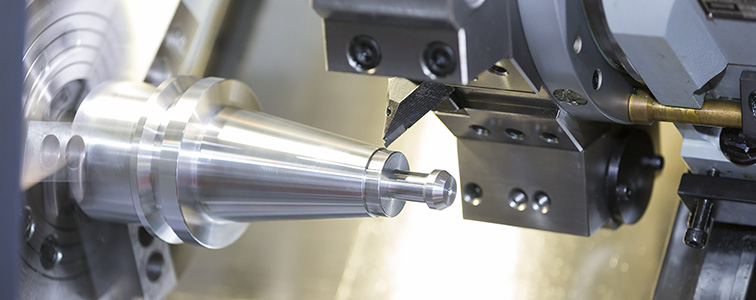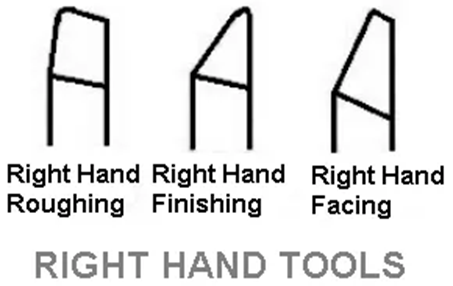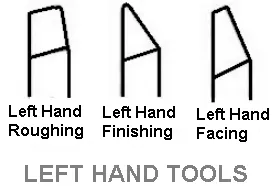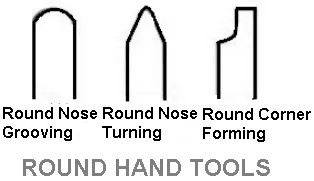If your lathe tool kit has a series of lathe cutting tools, you can do a lot of work on the lathe. In order to get more benefits from the machine, you need to figure out the different types of lathe tools that perform various operations.
Therefore, this article will introduce what you can use in processing projects. This article mainly talks about the tool knowledge of lathes, so that you can understand different types of lathe tools and how to use different CNC turning tools.
What Is A CNC Turning Tool?
The turning tool is a tool with a cutting part used for CNC turning. Turning tools are one of the most widely used tools in CNC milling. The working part of the turning tool is the part that generates and handles chips, including the cutting edge, the structure for breaking or rolling up the chips, the space for chip removal or storage, and the passage of cutting fluid.
Classification Of Lathe Cutting Tools
Lathe tools are mainly divided into three categories: materials, uses, and feed methods. The different categories and their respective lathe tools are described below.
Classified By Material
This is the classification of the materials used in lathe tools. The following are common types of lathes classified according to the type of material.
High–Speed Steel Tool
It is a turning tool whose cutting edge comes from high-speed steel and can be continuously ground. Therefore, they are ideal for roughing and semi-finishing.
Carbide Tool
The blade is made of cemented carbide and is used for cutting cast iron, non-ferrous metals, plastics, chemical fibers, graphite, glass, stone and ordinary steel. It can also be used to cut difficult-to-process materials such as heat-resistant steel, stainless steel, high-speed steel, and tool steel.
Diamond Blade
Diamond is a very hard and wear-resistant material. It has low friction coefficient, high elastic modulus, high thermal conductivity and low thermal expansion coefficient. Therefore, lathe tools with diamond cutting edges are ideal for precision machining of brittle, wear resistance, compliance and hard materials (such as graphite).
Other Materials
The cutting edges of these types of lathe tools come from other materials, such as cubic boron nitride and ceramics. Therefore, they are ideal for roughing and cutting cemented carbide.

Lathe Tools Are Classified By Use
This is to classify lathe tools according to their functions. The following are common types of lathe tools classified according to their use.
Turning Tool
Turning tools are used to remove material from the blank. There are generally two types of turning tools: rough turning tools and fine turning tools.
Rough turning tools are used to remove most of the workpiece in a short time. They have ground cutting angles that allow disassembly, and they can withstand the maximum cutting pressure.
The fine turning tool is a lathe turning tool used to remove small parts of a workpiece. The angle is ground, and according to its name, the final product has a smooth and accurate surface.
Boring Tool
Boring is a lathe tool used to enlarge holes. When you want to enlarge an existing hole, you need to use a boring bar. The boring bar can be easily drilled into an already drilled hole and expand its diameter. It can quickly expand the hole and process it into the appropriate size to correctly install other components.
Chamfering Tool
Chamfering tools are lathe turning tools used to form grooves on parts. It can also be used to create smooth or dangerous edges on the workpiece.
Knurling Tool
Knurling tools are used to produce knurled lathe parts. They are used as handles for handles by creating or pressing patterns on circular cross-sections, and are usually also created on fasteners such as nuts. The knurling tool is designed with a specific pattern.
Parting Tool
Parting tool refers to a narrow-edged tool used for turning or planing or cutting a workpiece in half, or is defined as a tool used to cut the workpiece from the main body of the processed blank. It has a variety of manufacturing forms.
Thread Cutting Tool
Thread cutting tools are suitable for cutting threads on lathe parts. There are generally two forms: internal thread cutting and external thread cutting. External thread cutting involves fixing the workpiece in a chuck or between two centers. However, in internal thread cutting, the part is clamped in the chuck while the tool moves on the chuck in a linear manner, removing chips from the workpiece as the workpiece passes.
Face Tool
The face tool is used to perform face operations on the lathe to cut a plane perpendicular to the rotation axis of the workpiece. The tool is installed in the tool holder leaning on the lathe bracket. During this process, the face tool will feed the part’s rotation axis vertically .
Slotting Tool
The grooving tool is usually a cemented carbide blade mounted on a special tool holder. It is designed as a blade with multiple tips. It is usually ground according to the size and shape required for a specific job, including grooving and other tasks.
Forming Tools
When used on a lathe, the forming tool is made flat or round. The cutting edge of a simple forming tool is ground into the shape of the groove, undercut or thread to be cut.
Classified By Structure
Integral
The cutter head and the cutter shaft are made of the same material, generally high-speed steel. The tool has good rigidity and is suitable for small turning tools and non-ferrous metal turning tools.
Welded
Connected by a welding process, the cutter head and the rod are made of different materials, and the carbide blade is inlaid on the rod. The structure is compact and the manufacturing is convenient. Suitable for all kinds of turning tools, especially small tools.
Clamp-on
The material of the cutter head is different from that of the cutter bar. The blade is fixed on the cutter bar by mechanical clamping, and the blade can be replaced when it becomes dull. It is a commonly used tool for CNC lathes, and the tool holder can be reused.
Lathe Tools Are Classified By Feed Mode
This describes how the cutting tool faces the workpiece and the direction in which the lathe rotates the workpiece. Therefore, according to this classification method, lathe tools are divided into three types: right-handed tools, left-handed tools, and round heads.
Right Hand Tool
The right-hand lathe tool removes material as it moves from right to left (it only needs a top view, keeping the rake face at the top). The name right-hand tool is used based on the analogy of the human hand. With the right hand, the thumb represents the tool feed direction. Therefore, the main cutting edge of the tool is located on the left side of the tool.

Left Hand Tool
Unlike right-hand lathe tools, left-hand tools remove material as they move from left to right (the top view keeps the rake face visible). With the left hand, the thumb represents the direction of the tool feed. Therefore, the main cutting edge of the tool is on the right side of the tool

Round Nose Tool
The round head turning tool has no back rake or roll angle. Therefore, the tool is fed from left to right or from right to the left end of the bed. However, in some cases, the round tip cutter may have a smaller caster angle. Due to the rounded edges, the round head turning tool is a commonly used tool in finishing turning.

How To Choose Lathe Tools
Choosing a lathe tool requires an understanding of certain factors related to the equipment. The following are very important factors that you must consider when choosing a lathe tool
Material Type
The type of material you cut is the basic factor that determines the type of lathe tool you can use. Before choosing a lathe tool, the important attributes you must pay attention to include: hardness, wear resistance, toughness and stiffness. These attributes play an important role in the types of lathe tools you can use. For example, extremely hard materials require carbide tools or diamond tools.
The Shape Of The Tool
The shape of the lathe tool is also another factor to consider when choosing. The position of the cutting edge also determines the cutting direction of the tool (right-hand tool, left-hand tool and round-end tool).
Desired Shape
Each type of lathe tool listed under the classification can lead to the specified shape. Therefore, you must integrate the required shape into the required lathe tool. Due to the complexity of most CNC machining products, you may need to choose several lathe tools.
Summarize
If you are not familiar with CNC machining and CNC turning processes, there may be some problems in choosing lathe tools. If you have a lathe related project, you can contact us. We have engineers with many years of experience in CNC machining and CNC turning. They understand different types of lathe tools and their applications. Choose us, you can get a high-quality delivery attitude.


